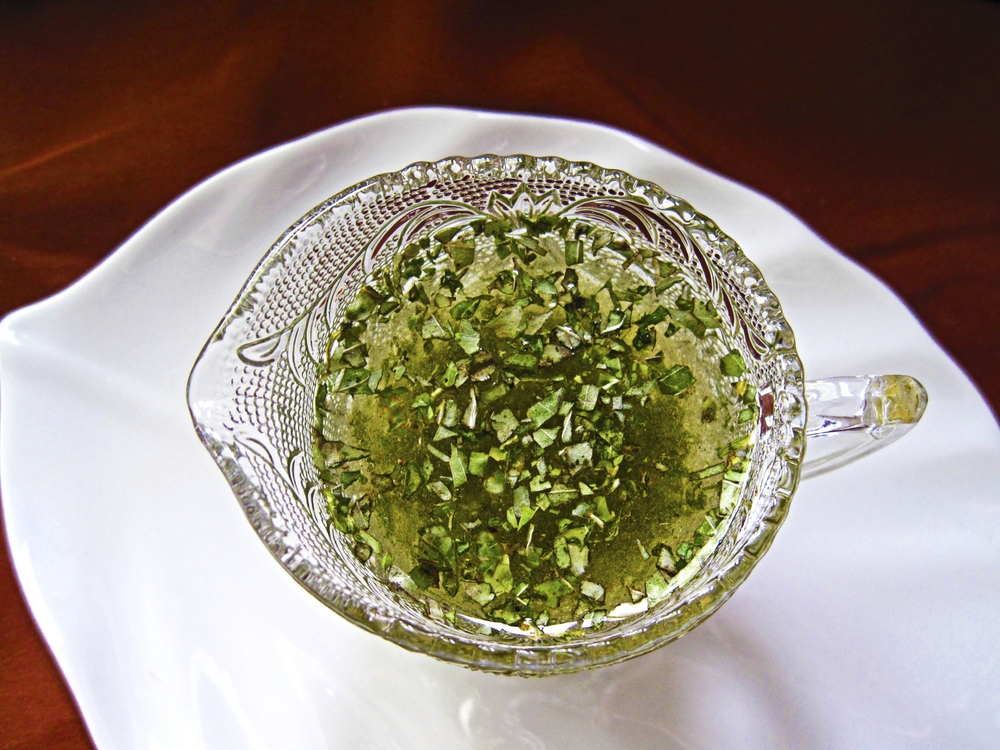Vinaigrettes: More Than Just Oil + Vinegar

At first glance, the vinaigrette seems to be nothing more than just a mixture of oil and vinegar.
It is a condiment so simple that it hardly seems like it can deliver anything at all. But a well-balanced vinaigrette can do wonders for any dish. It can transform a simple bowl of greens into a comforting salad, or uplift a plate of chicken or steak with just a little drizzle. Grains or rice take on bright flavors, roasted vegetables wake up, and potato salad becomes healthier. A vinaigrette can turn simple dining fare into an extraordinary meal.
Making your own vinaigrette is easy, as long as you keep the 3:1 ratio in mind.
We start all of our vinaigrettes with one part acid (we love our vinegars, but you can also try citrus or fruit juice) and three parts oil. Follow this proportion and your vinaigrettes are sure to taste superb. Once you’re comfortable with this ratio, you can adjust the proportions based on how acidic your ingredients are and how you’re using the vinaigrette. High acid vinegar calls for a little more oil, while the milder ones may stick to the usual proportion.
Since there are so few ingredients in vinaigrettes, quality is an important consideration.
The basic components are oil, vinegar, salt, and fresh black pepper. Use the freshest oil you can find, keeping in mind that extra virgin olive oil has a very different flavor than sesame oil or nut oils. Not all vinegars are created equal, either, and many supermarket “balsamic vinegars” actually have added coloring and may be cut with other ingredients. Read labels carefully, and use a purveyor you can trust (like The Olive Scene!). There’s also no substitute for fresh black pepper, as the pre-ground version often has lost its distinct aroma and bite. Lastly, use a fine to medium-grain salt, as larger flakes may not dissolve into the vinaigrette and can overwhelm the palate.
Our favorite method of making vinaigrettes uses an airtight jar, such as a mason jar or an empty jam jar.

Simply add all of the ingredients to the jar, seal it tightly with the lid, and shake vigorously. The shaking action emulsifies the ingredients, combining the oil and vinegar into a smooth mixture. The ingredients will separate and settle rather quickly, so be sure to give the jar another good shake before serving.
The classic method involves a bowl and a small whisk. Add the salt and vinegar to the bowl first, as salt won’t dissolve in oil alone. Whisk the vinegar constantly while slowly drizzling the oil into the bowl.
You can also mix other ingredients into a basic vinaigrette to add flavor and texture. Chopped herbs (especially leafy herbs like basil, tarragon and cilantro), minced shallots, or crushed garlic are great additions. If you’re a daring cook, try adding grated ginger, wild honey, a touch of mustard, flavored salts, or Greek yogurt.
You can use different oils, vinegars, herbs, spices and condiments to create an infinite variety of vinaigrettes that can complement any dish. A mild extra virgin olive oil in a simple vinaigrette compliments a green salad exquisitely. Vinaigrettes with sharper, more pronounced flavors go well with sturdier foods with strong flavors as well, such as steaks or wilted bitter greens. Fish, pork and chicken dishes brighten up when served with a vinaigrette that has a touch of mustard.
Experiment with different combinations of flavors and ingredients, and you’ll be amazed at how your meals transform into gourmet creations.


Leave a comment